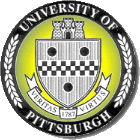



|
|
LASER SYSTEMS
>> GO TO
PHOTO GALLERY FOR PICS OF THE LASERS <<
|
Lowres
System
The lowres laboratory allows us to record
vibrationally resolved spectra to measure the fluorescence lifetime.
Typically, the sample is seeded into He or Ar gas and expanded into a
vacuum chamber (10-5 torr) through a 1 mm diameter orifice
pulsed valve (General Valve Series 9), operating at 10 Hz. One
centimeter downstream of the valve, the sample is excited with the
second harmonic of a Quanta Ray Nd3+: YAG (Model DCR-1A)
pumped dye laser (Model PDL-1). The proper dye is used depending on the
desired frequency. The dye laser output is frequency doubled with an
external crystal (KDP or BBO) into the ultraviolet. From the point
of intersection between the supersonic jet and laser, the molecules are
excited and the fluorescence is collected with a photomultiplier tube
(PMT). Finally, the collected data is processed by a boxcar
integrator (Stanford Research Systems) and digitally recorded with a
data acquisition system. |
|
Hires System
The rotationally resolved electronic experiments are performed using a
continuous wave (CW) laser spectrometer. Again, the sample is seeded
into He or Ar gas, expanded through a quartz nozzle, and probed 15 cm
downstream of the nozzle by an Ar+ pumped CW tunable dye laser. Various
nozzle diameters are available depending on the needed experimental
conditions. The CW laser is operated with the dye of choice. 100-200 μW
of UV radiation is produced by intracavity frequency doubling with a BBO
or LiIO3 crystal. Absolute transition frequencies were calibrated by
comparing with the I2 absorption spectrum. Relative frequency
calibration was performed using a stabilized etalon with a free spectral
range of 299.7520 ± 0.0005 MHz at the fundamental of the dye. The
fluorescence excitation spectrum, the iodine absorption spectrum, the
relative frequency markers, and the laser output power are
simultaneously collected and processed by a data acquisition system. |
|



